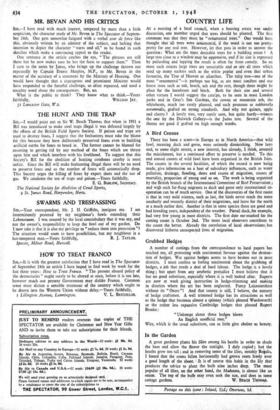COUNTRY LIFE
AT a meeting of a local council, when a housing estate was under discussion, one member urged that trees should be planted. The first comment was that they must be "ornamental trees." One would have thought that all trees were ornamental, if the word is not too pretty- pretty for any real tree. However, let that pass in order to answer the question: What are the most desirable trees for a building estate ? A large tree close to a window may be oppressive, and if its size is repressed by pollarding and lopping the result is often far from comely. So on most such estates large trees are unsuitable and so are all trees which send up many suckers such as the white poplar and even that urban favourite, the Tree of Heaven or ailanthus. The tulip tree—one of the most " ornamental "—is perhaps too big, as are most conifers and our forest trees such as oak, beech, ash and the rest, though there might be place for the hornbeam and birch. Both for their size and several other virtues I would suggest the catalpa, to be seen in most London parks and in Gray's Inn Gardens, the rowan or mountain ash, the whitebeam, much too rarely planted, and such prunuses as subhirtella autumnalis, grafted on strong standards. And why not quince, apple and cherry ? A lovely tree, very rarely seen, but quite hardy—witness the one by the Dulwich Gallery—is the Judas tree. Several of the thorns are good if grafted on high enough trunks.


































 Previous page
Previous page